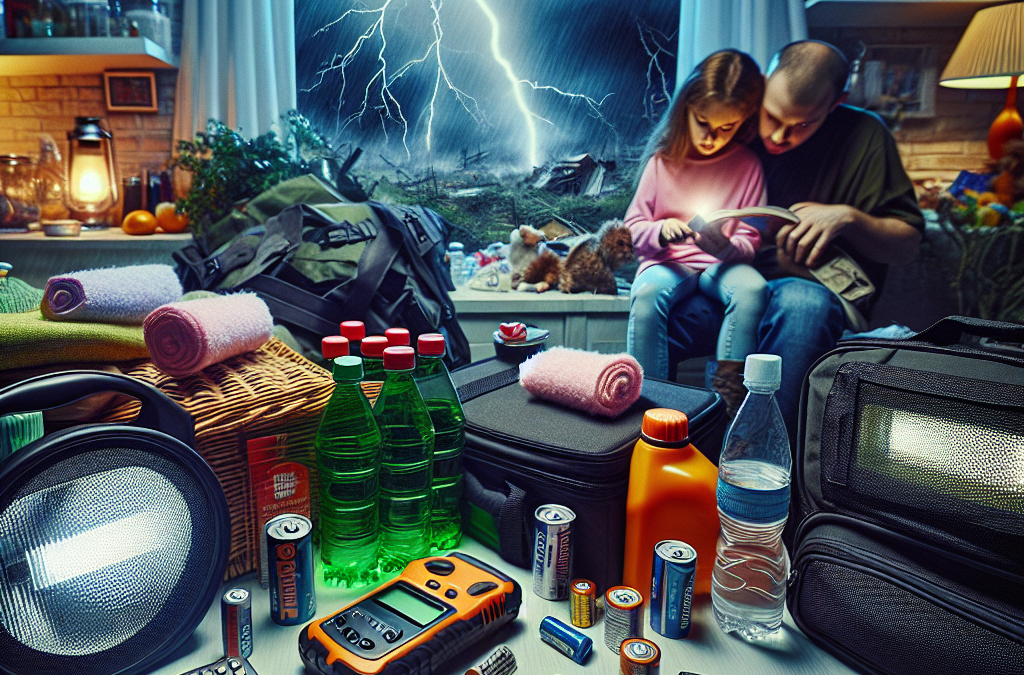Understand the Risks
Why Tornadoes Happen
Tornadoes are fascinating yet terrifying natural phenomena. From my curiosity about weather patterns, I learned that these swirling columns of air form during severe thunderstorms, particularly when warm, moist air meets cooler, dry air. This collision creates instability in the atmosphere, which can lead to powerful storm systems capable of producing tornadoes.
But understanding the “why” is just the beginning. It’s also crucial to know how often tornadoes occur in your area. Some regions are more prone than others, and knowing this can help you prepare better. Make sure to check your local weather statistics and be aware of the tornado-prone seasons.
Lastly, the unpredictability of tornadoes adds to their danger. They can pop up suddenly, often with little warning. It’s important to keep an eye on the weather reports and understand the different alerts to stay informed.
Have an Emergency Plan
Creating Your Tornado Safety Plan
Having a solid emergency plan in place can make all the difference when a tornado strikes. I remember sitting down with my family to sketch out our plan. We decided on a designated safe area in our home – ideally a basement or a small, windowless room where we could ride out the storm together.
In the event of a tornado warning, practicing your plan is just as important as having one. We conducted regular drills to ensure everyone knew where to go and what to do. This also helped calm some of the nerves that come with the thought of facing a tornado.
Don’t forget to think about your pets! Including your furry friends in your emergency plan is vital. Make sure you have their carriers or leashes ready, so you can bring them to safety with you without any stress.
Thank you for reading this post, don't forget to subscribe NOW for FREE!
Prepare an Emergency Kit
What to Include in Your Kit
During my preparations, I found that an emergency kit is an absolute must. My first step was to gather essential supplies that would keep my family safe and comfortable during and after a tornado. Items like water, non-perishable food, flashlights, batteries, and a first aid kit are key components.
But you also want a few personal items. I added things like medications, important documents, and even a small game or book to keep spirits up while we hunkered down. The goal is to make sure everyone has what they need to feel secure.
Also, remember to check your kit regularly. I learned firsthand that being prepared means replacing old food and checking batteries every few months. This ensures that when the time comes, you won’t be scrambling for supplies that may have expired or gone missing.
Stay Informed
Monitoring Weather Updates
Staying informed is a crucial part of tornado preparedness. I can tell you from experience that I now rely on several sources for weather updates. There’s nothing like a solid weather app on your phone paired with a battery-operated weather radio for those times when the power goes out.
Sign up for local weather alerts. Most communities offer services that send out notifications for severe weather. It’s a simple way to stay ahead of tornado threats and get the information you need as soon as possible.
Always have a plan B for communication. When things get hectic, ensure that everyone in your family knows how to reach each other. This includes having backup contact methods, like calling relatives who live further away if cell services are compromised.
Practice and Education
Training and Drills
Lastly, practice makes perfect! One of the most impactful things I did was organize family drills. These practice sessions turned out to be fun and educational. We’d run through our emergency plan and take turns pretending that a tornado warning went off.
Teaching children about tornado safety is just as important. Kids are often curious and can feel scared when they hear about tornadoes. I found incorporating story time, games, and even videos about tornado safety can demystify the situation for them, making them feel more secure and prepared.
Don’t forget to educate yourself continuously. Whether it’s reading books, attending community workshops, or following meteorologists on social media, staying informed about tornado safety practices and news can make a huge difference during the storm season.
Frequently Asked Questions
1. What should I do if a tornado warning is issued?
Head to your designated safe area immediately, such as a basement or small interior room. Keep your emergency kit nearby and stay tuned to weather updates.
2. How can I make my home more tornado-resistant?
Strengthening your home’s foundation, reinforcing the roof, and installing storm shutters can help improve its tornado resistance. Consulting with a professional is always a good idea.
3. How often do tornadoes occur?
The frequency of tornadoes varies by region. Some areas, like the Midwest, experience them more frequently than others. Always check local statistics and stay informed about your area’s risk.
4. Should I evacuate if there’s a tornado warning?
If you are in a mobile home or an area with low safety ratings, it’s best to evacuate to a more secure structure. When in doubt, seeking shelter is always a smart move.
5. How can I help my community prepare for tornadoes?
Getting involved in local preparedness programs, volunteering for community drills, and sharing information with your neighbors can make a big impact. Educating others is crucial!






